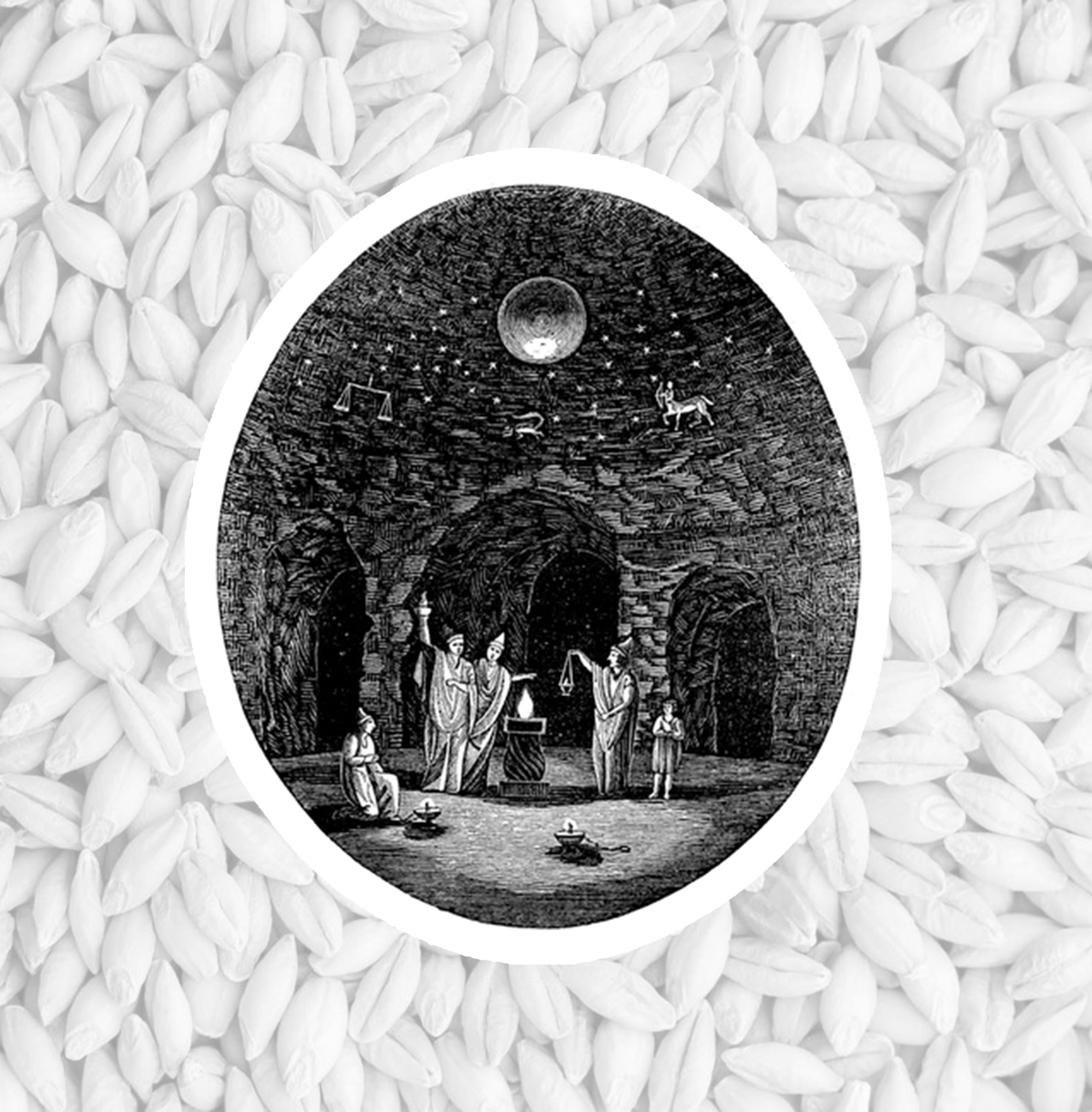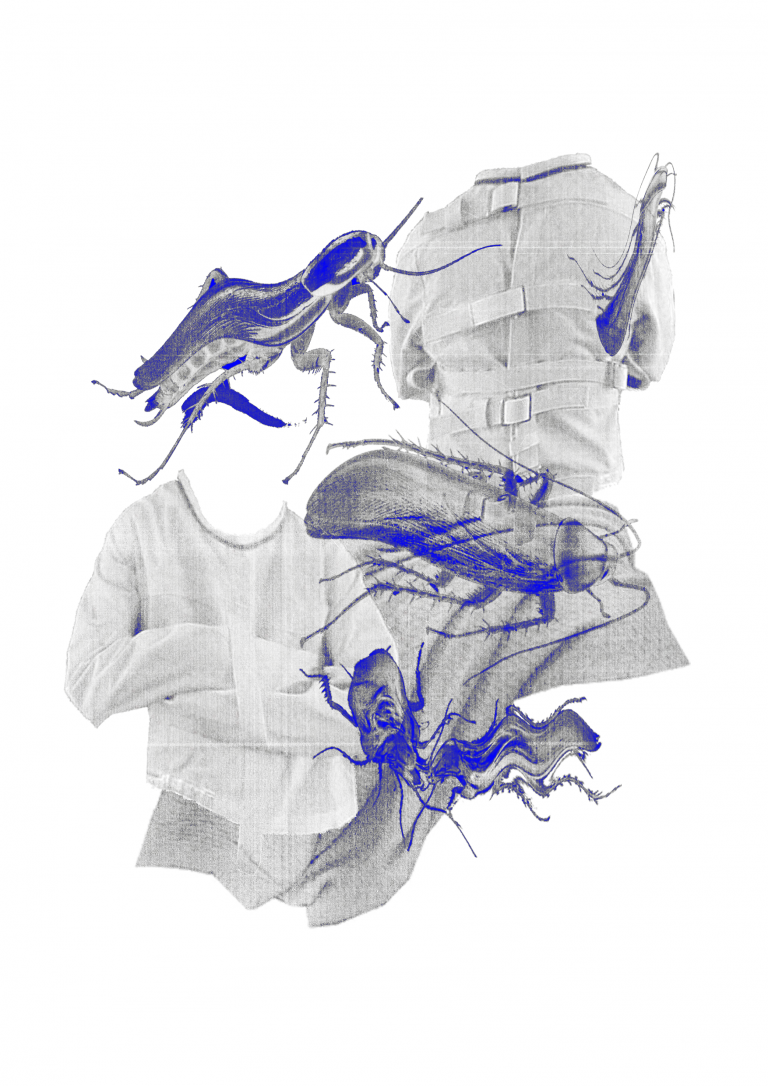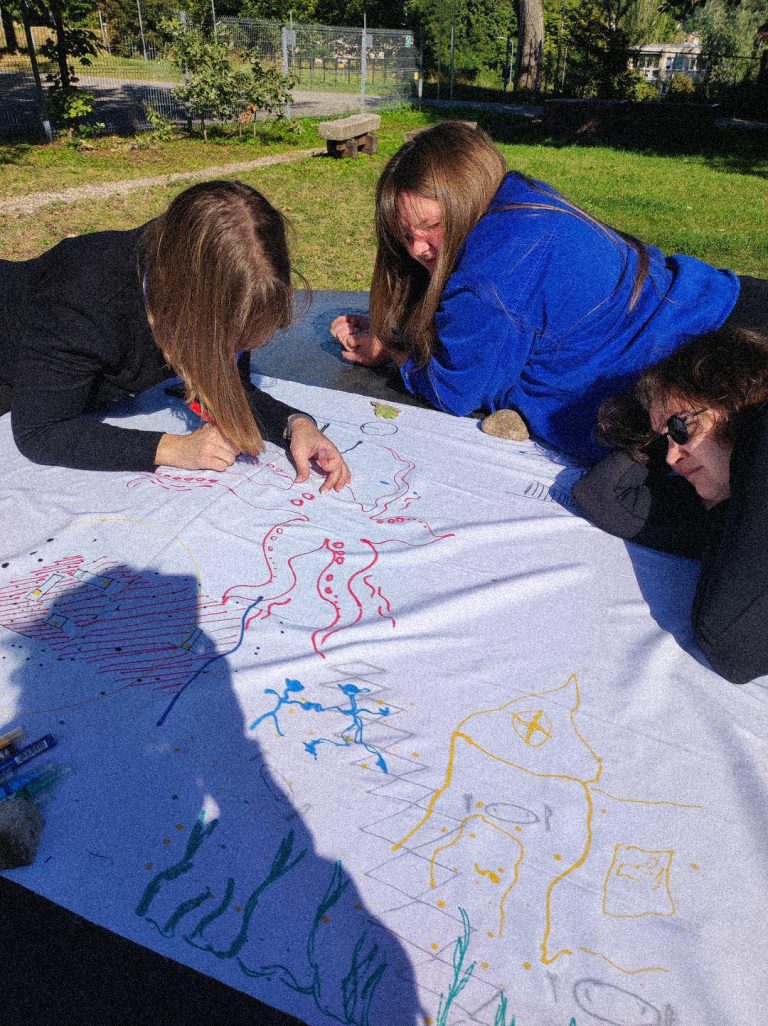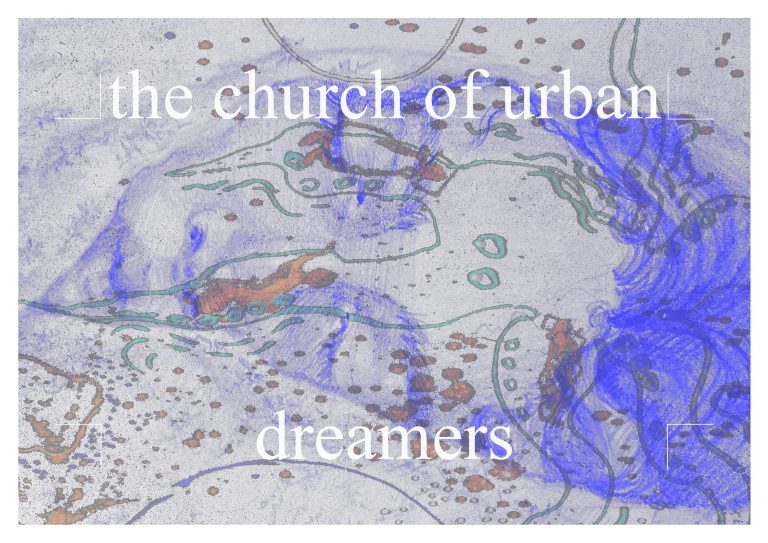I started my first personal experiments of collective dreaming in the spring of 2022. for my dream colleague I have chosen a person without any mutual context or prehistory, a fresh entrant into my social field, with whom I was not yet close in any way. mutual interest in the mysticism surrounding the dream led to discussions about the power of imagination in the process of purposeful dreaming, the possibility of planning the direction of the nocturnal vision even before falling asleep. it was decided to evaluate the quality and effectiveness of the planned exercises and rituals based on whether both experiment participants will be able to see at least one of the motives which would be consciously transmitted to the subconscious.
the first attempts were not very ambitious: it started with the choice of a simple motive, which had to penetrate as thoroughly as possible into the mind even before falling asleep. several hours in the evening were devoted to speculations and dream-wishing. this method is described by P. Caroll in “Liber Null & Psychonaut: An Introduction to Chaos Magic”:
to assume conscious control over the dream state, it is necessary to select a topic for dreaming. the magician should start with simple experiences, such as the desire to see a particular object (real or imaginary) and master this before attempting divination or exteriorization. the dream is set up by strongly visualizing the desired topic in an otherwise silenced mind, immediately before sleep .
collective dreaming in this context meant not so much the union of dreamers, the experience of alliance in a dream, but also the ritualistic shell itself, the creation of a common intention, and the individual processing of the information consumed by both dreamers.
[first]
for the first test, a color narrative was chosen: vivid blue and red motifs were visualized before sleep. the color red penetrated the dreams the most, it managed to be summoned in one of the two night visions.
[following]
the following experiments required more ideological preparation. attention was paid to occult literature, which, in addition to respect for ritual, a rich mystical baggage, and a focus on dreams, had another feature that was particularly important for the experiment: a high potential for stimulating imagination. depending on the complexity of the content and the length of the text, complete works or several fragments were read before going to sleep, from which the most memorable images, symbols, characters, events or themes were highlighted. informational collages were processed again before sleep, new possible scenarios were imagined.
the works of Kenneth Grant, Aleister Crowley and Austin Osman Spare have been selected for the dream-inducing reading sessions, in various formats and genres.
several, not very bright or understandable moments penetrated into the dreams: attire of specific aesthetic qualities, medieval scenographies, ritual-like actions.
[rituals]
over time, the hunger for a ritual that awakens more senses grew: reading or visualizing obviously did not penetrate the subconscious strongly enough; the dream-wishing practices henceforth included sensory experiences. smell, hearing, sight, and touch were actively stimulated. the rituals, like previous dream-wishing practices, were performed remotely, without direct contact, so it was impossible to ensure identical sensory experiences at both ends of the experiment.
the inadequacy of small and individually performed rituals was revealed by the dreams: usually completely untainted by any trace of the evening ritual. it was decided to take more serious action, inspired by ancient Greek mythology, especially the ritualistic cult of the Eleusinian Mysteries which was mentioned in several sources.
_the Eleusinian Mysteries_ritual_private session
the subject of the Eleusinian mysteries came up unexpectedly. interest was stimulated by the enigmatic aura surrounding the mysteries: it was a secret, initiation-related ceremony, which lasted for several days in September or October, depending on the lunar calendar. the Eleusinian cult worshiped the goddess of fertility Demeter. the mysteries symbolized her grief at the loss of her daughter Persephone. ceremonies were extremely secretive, performed only in a selective circle of cult members, and were supposed to ensure a favorable afterlife for the participants. it is one of the few rites of Ancient Greece in which representatives of various social classes, both rich and slaves, men and women, could participate. during the ritual, a “drink of heroes” – kykeon – with supposedly psychoactive properties was consumed.
preparation for the ritual inspired by the Eleusinian mysteries lasted over a week. firstly, the menu was prepared. after searching through several sources, it was decided to use the recipe mentioned in Homer’s texts. then the main dish to complement the kykeon – orzo stew – was chosen. after that, the attention is returned to the ritualistic basis of the mysteries themselves: deepening of mythological knowledge and the development of sensitivity to Demeter’s tragic loss. October‘s full moon was chosen for the ritual.
preparation [WEEK]
_historical sources are reviewed, the most authentic version of kykeon is researched;
_the character, ritualistic nature, goals and main accents of mysteries are studied;
_the topic of mysteries is introduced into everyday discussions. various religious, cultic and cultural narratives of the afterlife are considered, the version of life after death depicted in Greek mythology is investigated;
_visual study: drawings of the ceremonial area, reflections of mysteries in art, depiction of the worshiped Demeter and symbols are examined. several drawings are made;
_authentic Greek hymns to the gods are chosen for the main sonic theme of the week.
night of the mysteries[KYKEON]
_pramnian (icarian) wine – dry Saperavi grape wine is used instead; barley, mint, honey, goat cheese;
_barley needs to be washed and boiled in a large amount of water for about an hour. boiled grits then should be strained, water has to be poured into a separate container to cool;
_after boiling red wine with a few spoons of honey and a larger amount of fresh mint leaves; barley water is mixed in at a ratio of 1:2;
_a small amount of goat cheese is added to the boiling wine, the mixture should be stirred until the cheese melts;
_kykeon should be cooled to room temperature.
night of mysteries [RITUAL]
_orzo stew is prepared for the Greek dinner. preparatory steps for kykeon production are carried out in the meantime;
_after dinner, kykeon is prepared;
_the moment of kykeon consumption is documented audiovisually, the taste and expected effect are discussed;
_as soon as the intoxicating effect of kykeon kicks in, one lies down in a comfortable horizontal position. thoughts are allowed to flow uncontrollably, visiting visions and thoughts are voiced and discussed.
_one goes to sleep, dreams are documented in the morning.
observations:
1_long and detailed preparation for the ritual arouses many thoughts, associations and suggestions about the main topic of the ritual even during the day;
2_multi-layered research of the subject (through sound, image, history, science, etc.) has more opportunity to graft characteristic narratives or symbols into different layers of the subconscious;
3_the ritual can be augmented and more elements can be added, but due to the lack of information about the original mysteries, it was decided to limit it‘s course to simple and unforced actions;
4_one can expect traces of the ritual in dreams both during the preparation stage, immediately after the ritual, and after a longer period of time.






